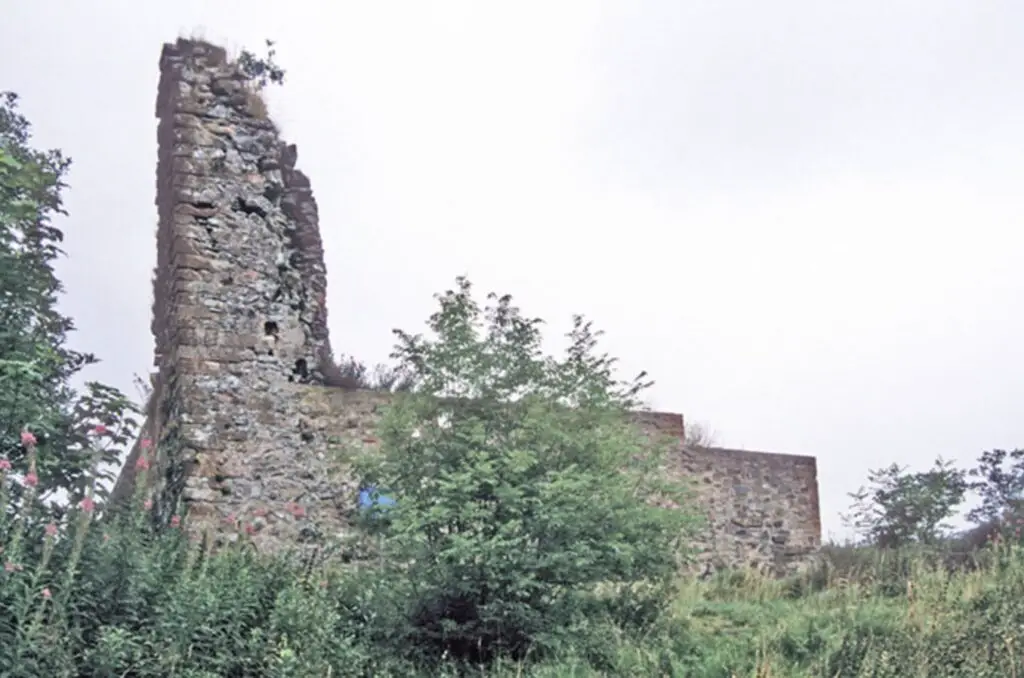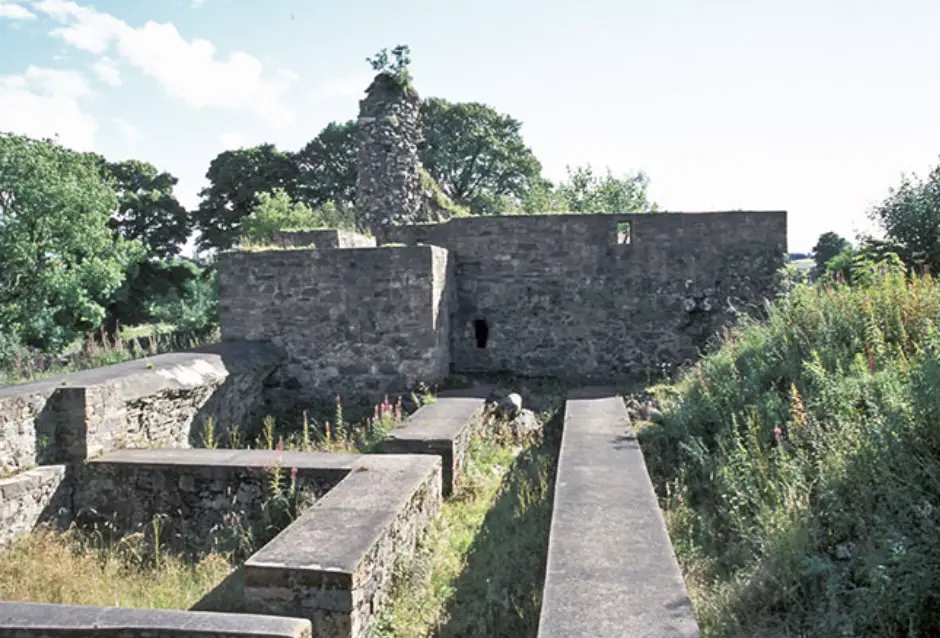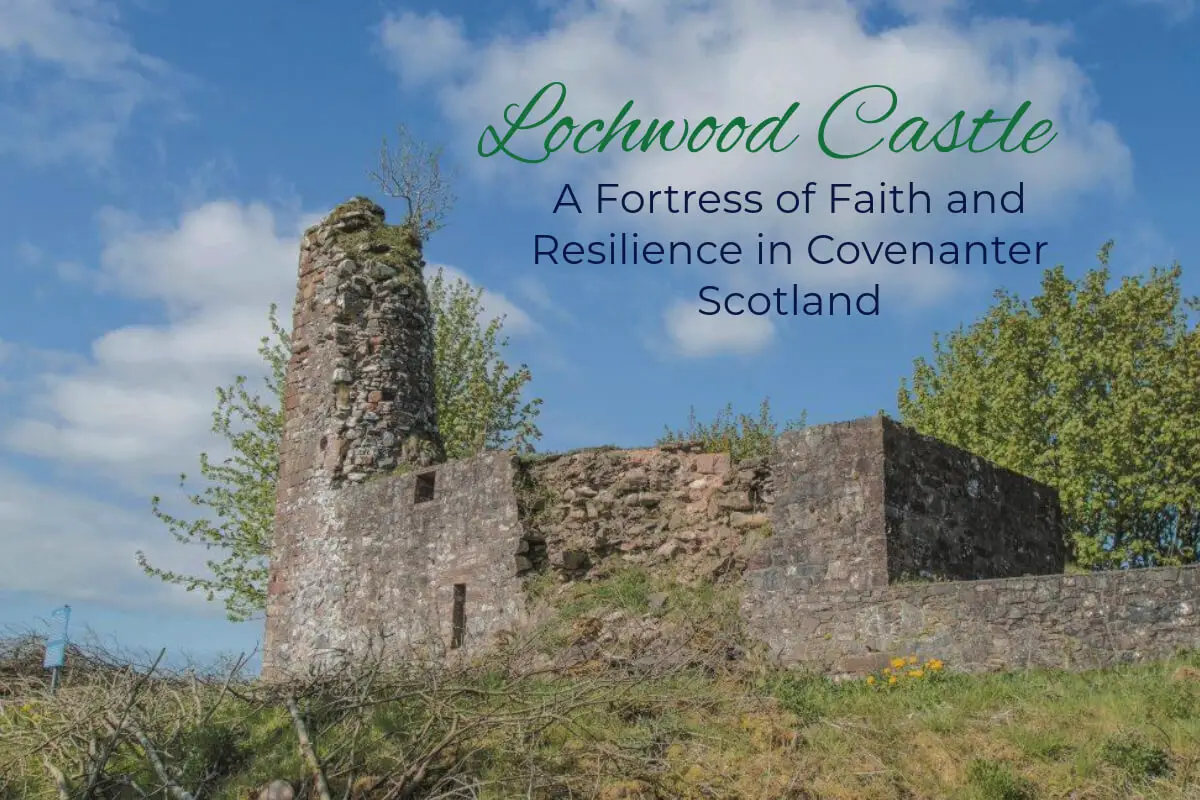Scotland’s history is steeped in stories of faith, defiance, and resilience, and few structures embody this legacy as powerfully as Lochwood Castle, also known as Lockwood Tower.
Nestled in Dumfriesshire, this once-mighty stronghold now lies in ruins, its crumbling stones bearing silent witness to centuries of conflict and change. Though much about its history remains shrouded in mystery, Lochwood Castle offers a fascinating glimpse into the lives of its occupants, who may have included members of the Johnston family—staunch Presbyterians likely aligned with the Covenanter movement.
Table of Contents
- The History of Lochwood Castle
- The Covenanters and Lochwood Castle
- The Legacy of Lochwood Castle and the Covenanters
- Related Questions
The connection between Lochwood Castle and the Johnstons, or my great great great grandfather James Johnston, is speculative but compelling. As a prominent family in the Dumfriesshire region, the Johnstons may have been associated with this castle or one like it, using it as a home and a fortress during a time of great upheaval.
Whether or not they lived within its walls, Lochwood Castle serves as a powerful symbol of the struggles faced by Scottish families like the Johnstons, whose lives were shaped by their faith and the turbulent history of their homeland.

The History of Lochwood Castle
Lochwood Castle’s origins date back to the 12th century, when it was likely built as a motte-and-bailey structure by the Bruces, lords of Annandale. Situated on a ridge, it would have been strategically placed to oversee the surrounding countryside as a defensive structure and a statement of power.
By the 14th century, the Johnstones—key figures in the region—are believed to have occupied the castle, possibly as knights serving the Bruce lords.
Over the centuries, Lochwood Castle underwent multiple transformations. In the late 15th century, a large L-shaped tower was added, signaling its role as a fortress and a residence. The courtyard was lined with additional buildings, creating a bustling activity hub that reflected its occupants’ prominence.
However, this prosperity did not last. By the mid-16th century, the castle was destroyed, likely during one of the many conflicts that plagued Scotland.
Rebuilt in the 17th century, it remained in use until about 1705, after which it was abandoned officially in 1773 and now lies in ruins. Today, Lochwood Castle is privately owned by Lord Annandale, a member of the Hope-Johnstone family, and is inaccessible to the public.
The Covenanters and Lochwood Castle
I feel that our ancestor James Johnston may have lived at the Lochwood Castle or a similar castle nearby because of the castle’s significance and the covenanters’ significance. To understand the importance of Lochwood Castle, one must delve into the turbulent history of the Covenanters, a movement that defined Scotland in the 17th century.
The Covenanters were staunch Presbyterians who resisted efforts by the Stuart kings to impose Anglican practices on the Scottish Church. Their name comes from the National Covenant 1638, a document affirming Scotland’s commitment to Presbyterianism and rejecting royal interference in religious matters.
The Covenanter movement was as much about national identity as faith. The Presbyterian Church represented the heart of Scottish culture and independence for its adherents.
The Stuarts’ attempts to impose Anglicanism were seen not only as a religious affront but also as an encroachment on Scotland’s sovereignty. This resistance often came at a high cost, as Covenanters faced persecution, imprisonment, and even execution for their beliefs.
Lochwood Castle, located in the heart of Covenanter territory, would have been a focal point in this struggle. As a stronghold in the Lowlands—a region where Presbyterianism was particularly strong—it may have served as a refuge for those aligned with the movement. Its walls would have witnessed both the enthusiasm of religious defiance and the brutality of repression, standing as a testament to the resilience of its occupants.
A Likely Connection: The Johnstons and Lochwood Castle
The Johnston family, a prominent name in Dumfriesshire, fits naturally into this narrative. While no definitive evidence exists that they lived in Lochwood Castle, their history and geographical ties make such a connection plausible.
The Johnstons were known for their Presbyterian faith and involvement in their time’s political and religious struggles, aligning them with the Covenanter cause.
It is possible that Lochwood Castle—or a similar fortress—was their family seat during the height of the Covenanter movement. As a noble family, they would have had the resources and influence to support the cause, but this also made them targets of persecution.
Castles like Lochwood were not only homes but also symbols of resistance, and their destruction often marked the fall of prominent families.
The story of Baron James Johnston, whose family suffered tragic losses during this period, parallels the fate of many Covenanter families. Like Lochwood Castle, which was destroyed and rebuilt multiple times, the Johnstons’ resilience in the face of adversity reflects the strength and determination of those who fought to preserve their faith and identity.
Lochwood Castle as a Symbol of Resilience
Though its walls now lie in ruins, Lochwood Castle remains a powerful symbol of the resilience that defined Scotland during the Covenanter era.
Its strategic design, from its L-shaped tower to its fortified courtyard, speaks to the ingenuity of its builders and the challenges they faced. More than just a fortress, it was a home where families lived, worked, and worshipped, even as the world was torn apart by conflict.
For families like the Johnstons, castles like Lochwood represented the privileges of nobility and leadership responsibilities. They were places where decisions were made, alliances were forged, and faith was defended. The fall of such strongholds often marked the loss of property and the end of an era for the families who lived there.
Yet, as Lochwood Castle was rebuilt after its destruction, so did families like the Johnstons find ways to adapt and survive. The castle’s ruins are a testament to this cycle of loss and renewal, reminding us of the enduring strength of those who came before us.

The Legacy of Lochwood Castle and the Covenanters
The story of Lochwood Castle is inseparable from the broader history of the Covenanters and the struggles that shaped Scotland. Its walls, now crumbled, once stood as a beacon of resistance against oppression, a refuge for those who dared to defy the powers of their time.
While the castle may no longer stand in its full glory, its legacy lives on in the stories of the families who called it home and the principles they fought to uphold.
For Baron James Johnston, whether they lived within Lochwood’s walls or a similar castle in the region, their connection to this history is a source of pride and reflection. Their likely involvement in the Covenanter movement highlights their commitment to their faith and willingness to endure hardship for the sake of their beliefs.
Lochwood Castle Today: A Ruin with a Story
Today, Lochwood Castle is a ruin, privately owned and inaccessible to the public. Yet, its story continues to captivate those who seek to understand Scotland’s past.
Its connection to the Covenanters, its role as a noble residence, and its enduring symbolism make it a key piece of the region’s history. As we reflect on its legacy, we are reminded of the resilience and resourcefulness of the people who once lived there.
For those who trace our roots to families like the Johnstons, Lochwood Castle represents more than just a historical curiosity. It is a reminder of the values and struggles that shaped our ancestors’ lives and the enduring strength that allowed them to persevere. Whether as a direct connection or a broader symbol, it offers a glimpse into their world—a world of faith, defiance, and unyielding resilience.
The Hummel Family is a website all about Family History research. We focus on Swedish, German, English, Scottish, and American Genealogy. We also discussed Asia and China, as we had ancestors who spent many years in China.
You are welcome to join us and become part of our community by signing up for our FREE newsletter, The Hummel Family; sign up by clicking here.
Also, check out our Youtube Channel, Family HIstory Buzz, by clicking here.
Related Questions
What Are The Swedish Mantal Tax Records?
The Swedish Mantal tax system was prevalent in Sweden for over 300 years. The Mantal tax was a tax placed upon Swedish households and people. The Mantal tax system was organized and structured.
You can learn more by reading our blog What Are The Swedish Mantal Tax Records? History & Genealogy Research Tips by clicking here.
What Is The Purpose Of Genealogy?
The purpose of genealogy is to study family, family history, and the tracing of our lineage or our ancestors. The purpose of genealogy goes far beyond the dates, names, and places of our ancestors. This is because you learn more about your family and yourself as you do your genealogy. Genealogy helps to unite and link families as you discover things about your family that you did not know.
You can learn more about Genealogy by reading our blog What Is The Purpose of Genealogy? by clicking here.
Any Good Alternatives To Ancestry.com?
The best alternative to Ancestry.com is FamilySearch. We like the FamilySearch program because it is free, collaborative, and easy to use. FamilySearch also offers many sophisticated functions and features that other programs would charge for.
You can learn more by reading our blog Any Good Alternatives To Ancestry.com? by clicking here.
